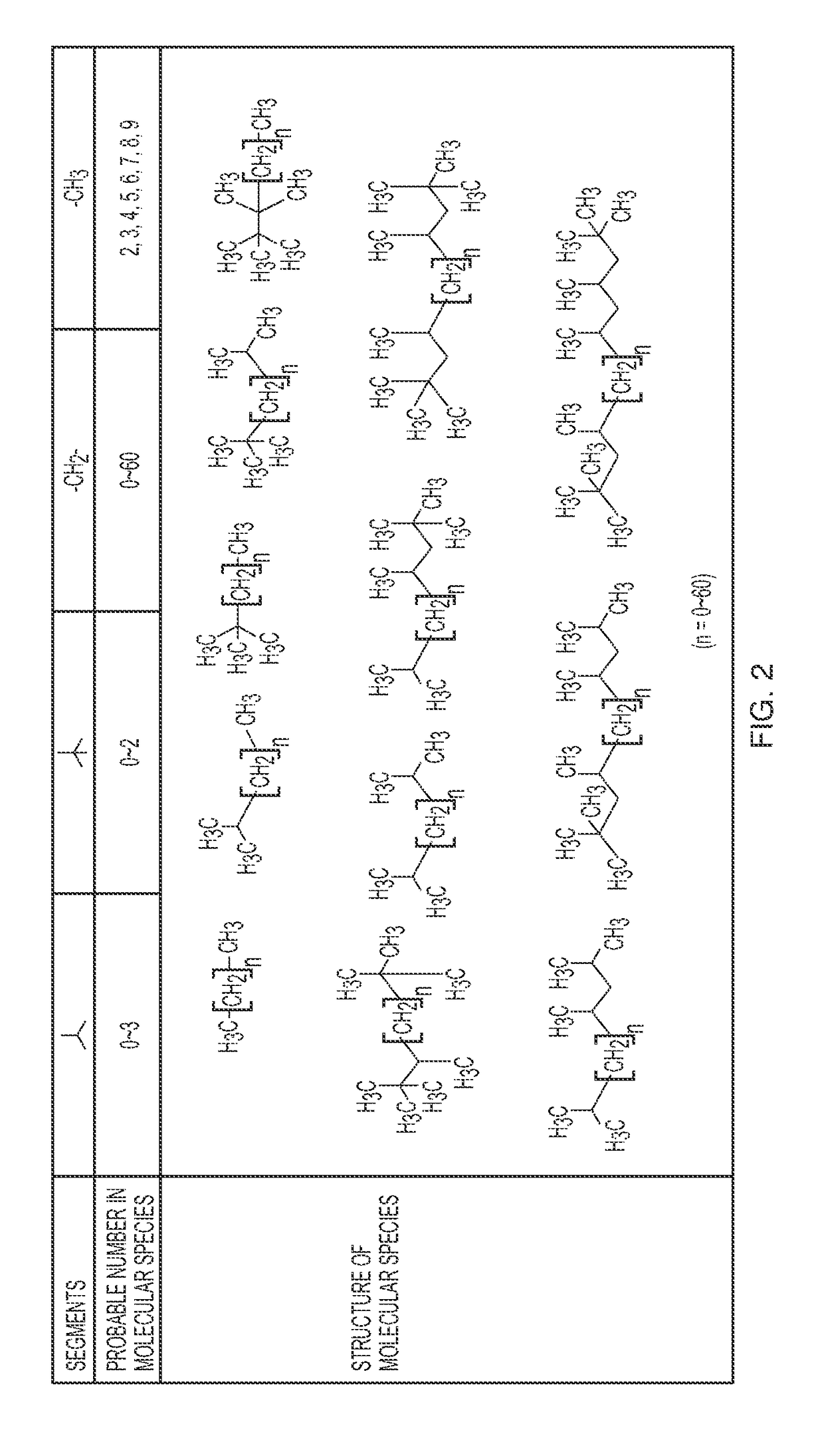Method of characterizing chemical composition of crude oil for petroleum processing
a crude oil and chemical composition technology, applied in the field of crude oil chemical composition characterization for petroleum processing, can solve the problems of nothing statistical methods could offer, difficult and highly subjective statistical model development, and inability to determine a detailed crude oil assay
- Summary
- Abstract
- Description
- Claims
- Application Information
AI Technical Summary
Benefits of technology
Problems solved by technology
Method used
Image
Examples
Embodiment Construction
A description of example embodiments of the invention follows.
Molecular Characterization of Petroleum Fractions
[0083]Molecule-based approaches have been extensively investigated as possible alternatives to the “pseudocomponent approach” to characterize crude oil and petroleum fractions in support of process modeling and simulation of refinery processes. See Watt; M. T. Klein, G. Hou, R. J. Bertolacini, L. J. Broadbelt, A. Kumar, Molecular Modeling in Heavy Hydrocarbon Conversions, Taylor & Francis, Boca Raton, Fla., 2006. An example of molecule-based models is Quann and Jaffe's Structured-Oriented Lumping. See R. J. Quann, S. B. Jaffe, Structured-Oriented Lumping: Describing the Chemistry of Complex Hydrocarbon Mixtures, Ind. Eng. Chem. Res. 1992, 31, 2483-2497; S. B. Jaffe, H. Freund, W. N. Olmstead, Extension of Structure-Oriented Lumping to Vacuum Residua, Ind. Eng. Chem. Res. 2005, 44, 9840-9852. Individual hydrocarbon molecules are represented by this model as vectors of increm...
PUM
| Property | Measurement | Unit |
|---|---|---|
| API gravity | aaaaa | aaaaa |
| API gravity | aaaaa | aaaaa |
| chemical composition | aaaaa | aaaaa |
Abstract
Description
Claims
Application Information
 Login to View More
Login to View More - R&D
- Intellectual Property
- Life Sciences
- Materials
- Tech Scout
- Unparalleled Data Quality
- Higher Quality Content
- 60% Fewer Hallucinations
Browse by: Latest US Patents, China's latest patents, Technical Efficacy Thesaurus, Application Domain, Technology Topic, Popular Technical Reports.
© 2025 PatSnap. All rights reserved.Legal|Privacy policy|Modern Slavery Act Transparency Statement|Sitemap|About US| Contact US: help@patsnap.com



